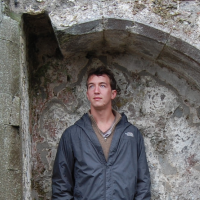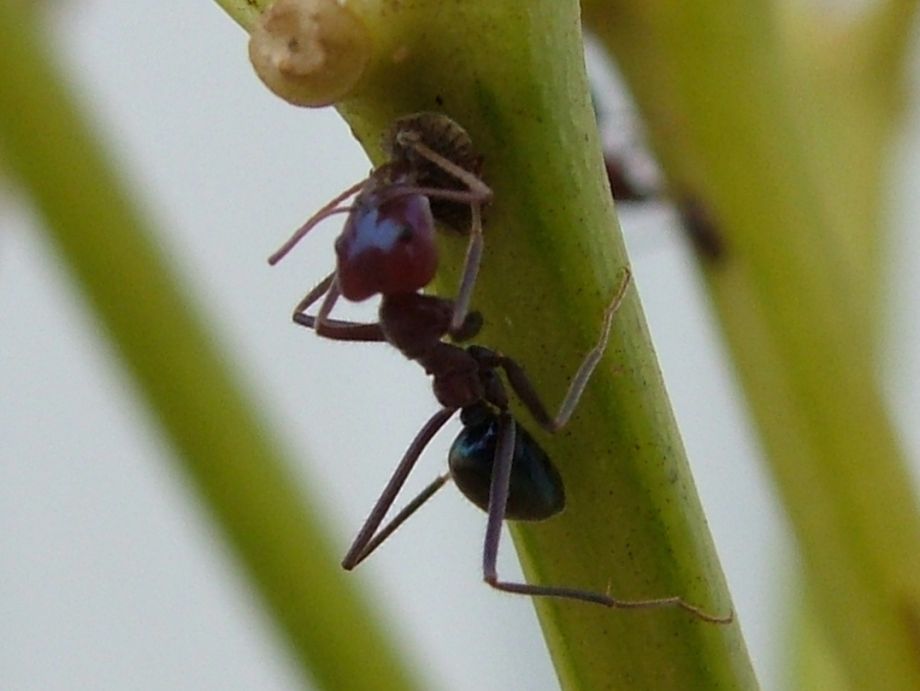It is symptomatic of America’s pastoral affinity and anti-urban bias that the popular children’s toy is called an ant farm, and adorned with images of windmills, barns and silos. You don’t need to be a professional ant researcher to see that the intricate design and engineering of ant civilization, to say nothing of the population density, is more evocative of a bustling metropolis. (Though I admit “Ant City” just doesn’t sound like something you’d want to welcome into your home.)
Needless to say, the professional ant researchers are on it. After studying diagrams of Australian meat ant colonies, mathematicians think the ants might have something to teach us about network design, and how we evaluate priorities in the placement of schools, post offices and power plants, and the expansion of transportation systems. Models of ant colony growth, they believe, can be used to plan human systems.
“The idea was to see if there was anything we could look at and take inspiration,” explains Arianna Bottinelli, a doctoral student in mathematics at Sweden’s Uppsala University and the lead author on the paper. Working with researchers from Sydney, Australia, and the Bronx, New York, she found that colony transportation networks seem to optimize for the same trade-offs that we consider when we build, say, a subway system: cost, efficiency and robustness.
What do those terms mean in an urban context? The Underground grid in central London, for example, is highly expensive (lots of mileage), efficient (easy to get from one point to another) and robust (if one stretch of track goes down, there’s always another way to reach your destination). But as you proceed towards the suburban termini, all these factors decrease — especially robustness, which proceeds toward zero. Beyond a certain point, cutting the line in the suburbs is certain to unlink the network.
Unlike Londoners, the Australian meat ant lives underground, in nests beneath sand, gravel and organic material. But on the surface, its colonies — which develop over six to eight decades — comprise an elaborate network of paths connecting nests and trees, where the ants get their food. The goal was to develop a simple, plausible rule that could explain these patterns.
The researchers developed a kind of function — called the minimum linking model (MLM) — which, applied in a laboratory setting, closely approximates within seconds what ants have built over decades. After a certain point, it’s more efficient than the most cost-effective method, which reduces trail mileage to its absolute minimum. It is also more robust: The cost-effective method, by definition, has no redundancies, or loops — no two ways to get from A to B.
The researchers then developed a tweak in the model designed to increase robustness: If you limit the number of links between nodes (the equivalent of restricting a tinker-toy hub to eight holes, or a carbon atom to eight bonds), the network loses its capacity to develop in a hub-and-spoke format.
The resulting network is more expensive, more efficient and more robust. And by adjusting the “limit” — what the research calls “neighborhood size” — you can control all those outputs. As you lower each hub’s capacity for connections, the network grows more expensive and more robust. As the branch limit declines from 20 to three, the model produces a highly redundant web, in which cutting a random link is only 30 percent likely to disconnect the system. Not bad! Unfortunately it costs six times as much. Sounds like the American road network.
This is not an abstract concept: Human hubs have limits too, and the trade-offs are similar. We decide how many students can be served by one school, or how many houses by one post office, and the cost, efficiency, and robustness of a network respond accordingly.
The ants, however, have no such “branch limit,” and the model shows that the robustness of their network declines toward zero when it grows beyond a certain point. The ants would, according to the model, keep building trails but stop building loops, making the ensuing network vulnerable to accident.
In the field, that doesn’t happen: Their colonies simply stop at a certain size. They may be because network robustness falls so steeply as colonies grow. It’s a lesson in the challenges of metropolitan planning.
The Science of Cities column is made possible with the support of the John D. and Catherine T. MacArthur Foundation.

Henry Grabar is a senior editor at Urban Omnibus, the magazine of The Architectural League of New York. His work has also appeared in Cultural Geographies, the Atlantic, The Wall Street Journal and elsewhere. You can read more of his writing here.
Follow Henry .(JavaScript must be enabled to view this email address)













